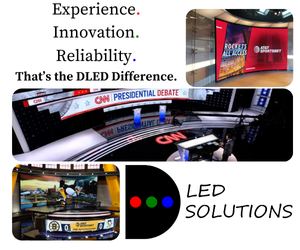MVPDs standardize TV ad terminology to simplify buying process

Subscribe to NewscastStudio for the latest news, project case studies and product announcements in broadcast technology, creative design and engineering delivered to your inbox.
A group of major multichannel video programming distributors (MVPDs) has agreed on standardized definitions for key multiscreen TV advertising terms, aiming to simplify the buying and selling process in an increasingly complex market.
The effort, backed by Comcast Advertising, Cox, DirecTV Advertising, Dish Media, Optimum Media, Spectrum Reach, Verizon Fios, Ampersand and the Video Advertising Bureau (VAB), establishes consistent language for terms such as “multiscreen TV,” “streaming” and “traditional TV.”
The move addresses concerns highlighted in a study by Advertiser Perceptions, which found that only 20% of advertisers believe their partners consistently use the same terminology.
“As TV proliferates across screens, everyone agrees that we need to simplify the buying and selling experience,” said Jason Wiese, executive vice president of strategic insights and measurement at VAB. “By partnering together across companies to define how we’re talking about multiscreen TV, we can clear up inconsistencies and confusion.”
The agreed-upon definitions include:
- Streaming: Video content delivered via an internet connection.
- Traditional TV: Content delivered via wired cable, telco, satellite, or over-the-air distribution. Some ads in this format may be dynamically delivered as MVPDs transition to IP-based infrastructures.
- Multiscreen TV: Advertising that reaches audiences across multiple TV and streaming endpoints.
Other notes from the consortium include:
- The phrase “traditional TV & streaming” may be used in place of “multiscreen TV” when deliberately breaking out the two mediums for clarity.
- “Connected TV” may still be used when discussing a device. In contrast, “premium video” may still be used when referring to content that is delivered transparently in a trusted brand-safe environment and seen by real people in a high-quality viewing experience.
- “Linear,” which refers to content watched on a pre-determined schedule, is a term that can be applied to traditional TV or to streaming (i.e., FAST is streaming but also linear). “Linear” is a viewing style rather than a distribution type.
Commonly used terms, such as “connected TV,” will still apply when discussing devices, while “premium video” will describe content delivered in a trusted, brand-safe environment.
The guidance also distinguishes “linear TV” as a viewing style rather than a delivery method, noting that linear content can be distributed via both traditional and streaming platforms.
MVPDs play a role in the evolving TV advertising ecosystem, particularly in addressable advertising, allowing targeted ad delivery based on audience data.
By standardizing terminology, the companies aim to facilitate better communication and improve efficiency in ad transactions. The new definitions are now being implemented across the participating companies.
Subscribe to NewscastStudio for the latest news, project case studies and product announcements in broadcast technology, creative design and engineering delivered to your inbox.




tags
Adtech, Connected TV, MVPDs, Streaming OTT, VAB, Video Advertising Bureau
categories
Advertising, Broadcast Business News, Cable Industry, Streaming